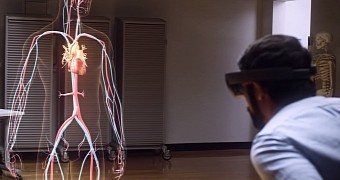Learning medicine has to do, at a point, with dealing with dead bodies. Dead bodies that some squirmy people might find disgusting and simply unapproachable.
After giving an impressive demonstration of 3D VR on site at E3 2015, Microsoft wants to help students overcome this impediment and have them deal with accurately built virtual human bodies in a personal interactive way without touching any dead tissue.
Not only that but HoloLens apps that will simulate human anatomy offering an interactive, multilayered human body, where the user can strip each physical layer from the skin to the bones and organs. In addition, when studying organs students could watch the blood flow through arteries and veins, helping them improve their knowledge about heart dysfunctions or circulatory diseases.
Such features are impossible with real human bodies. Simulating operations and other risky activities could be had on the HoloLens, being the perfect VR assistant of your job training.
Expanding this feature, Microsoft could bring the HoloLens to other sciences like history, arts, engineering, physics and chemistry for better understanding objects that are known and studied but physically out of the students' immediate reach.
This would be a perfect marketing tool for Microsoft as it'll enter the educational area when Google wants to reach enterprises and companies with its upcoming Glass. Smartly keeping away from the Oculus Rift domain, Microsoft could turn into a creative's dream.

 14 DAY TRIAL //
14 DAY TRIAL // 